Explore 5 distinct and fascinating homes in Britain that each come from different points in history. Through furniture design, experimental interiors, and traditional characteristics, each home has its own unique story.
Waddesdon Manor
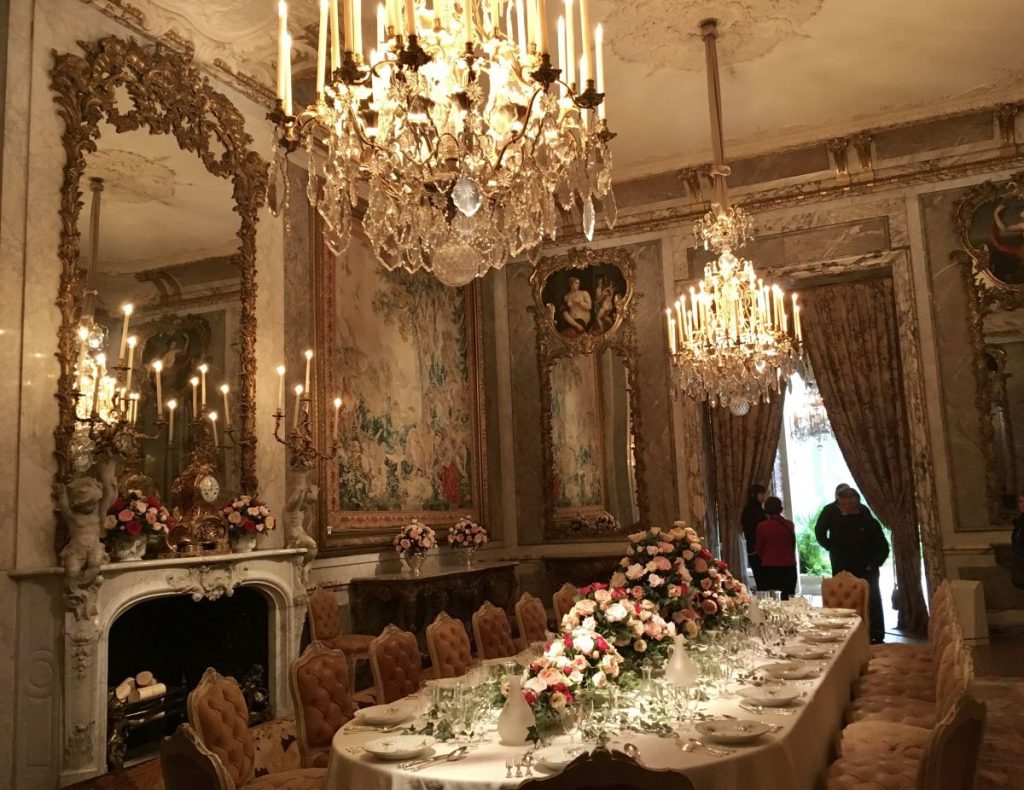
Fascinated by French Renaissance design, Baron Ferdinand De Rothschild used this as the core inspiration when building Waddesdon Manor.
French architect Gabriel-Hippolyte Destailleur, who already had experience working in the Renaissance style, designed the manor. He used authentic panels taken from actual Parisian houses to create the rooms.
Of course, with its lavish and rich decorations, this building was built to impress. However, surprisingly, it was only used on the summer weekends to entertain family and friends.
Eighteenth Century objects adorn Waddesdon Manor and even include incredible handmade furniture by the French Crown’s cabinet maker – Jean-Henri Riesener. Waddesdon Manor possess no fewer than 11 pieces of his furniture. This includes, a writing table that was made for Queen Marie-Antoinette and a desk for Louis XVI. Marie-Antoinette’s table was one of Reisner’s most celebrated pieces and within the furniture design it holds elaborate detailing of gilded flowers and intricate marquetry.
The interiors feature tapestries, sculptures, and paintings, all part of its rich art collection by a range of well-known artists.
Charleston House
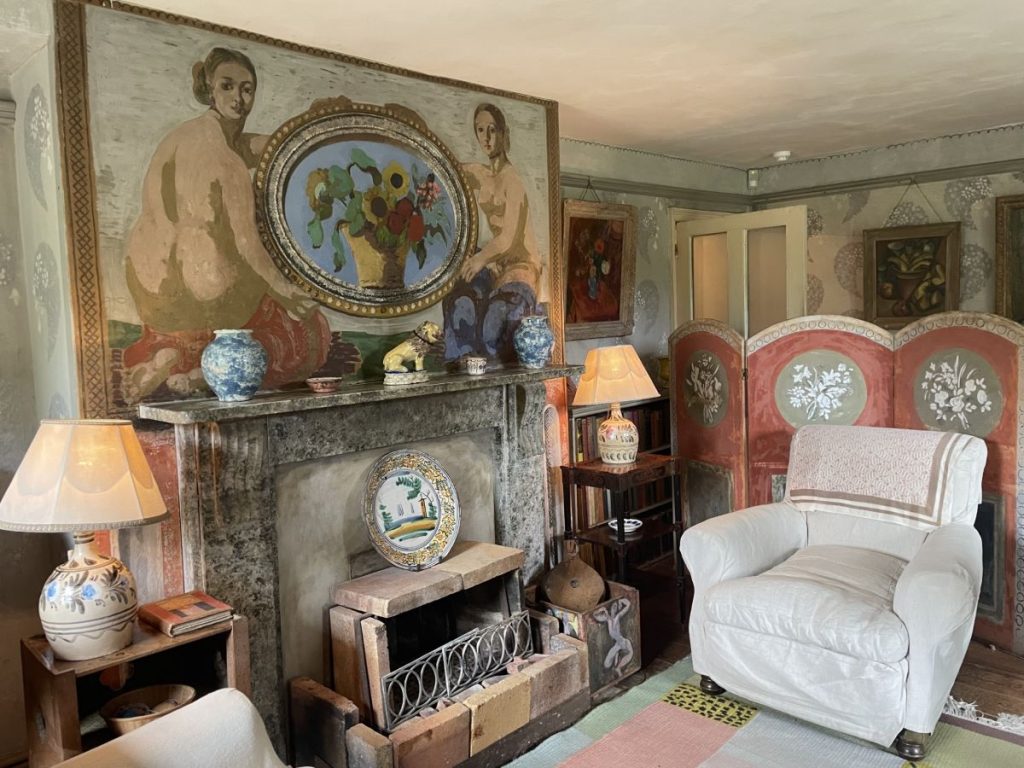
Charleston House has a fascinating history filled with artists and writers alike. Home to Vanessa Bell and Duncan Grant, it became the main gathering point for some of the 20th Century’s most radical artists, writers, and thinkers. They were known as the Bloomsbury Group.
When Bell first moved into this house, she whitewashed many of the walls in order to turn the entire house into a blank canvas. Walls, doors, and even the furniture were all used as a background for their artistic expression.
As a result, each room presents its own unique character, and is filled with inspiring collections of ceramics, paintings, textiles, and sculptures. With unexpected colour schemes, hand stencilled walls, and hand-painted furniture designs, this house shows us how absolutely anything can be art in its own right.
Much of these practices and their way of life was deemed shocking to the people of the 20th century. However, Charleston has always been about blurring the boundaries between what is art and what is life.
This house has and continues to inspire a huge number of designers and artists, and since 2004 it has been open to the public, where you can witness the wonders of this fascinating and unique place for yourself.
Chatsworth House
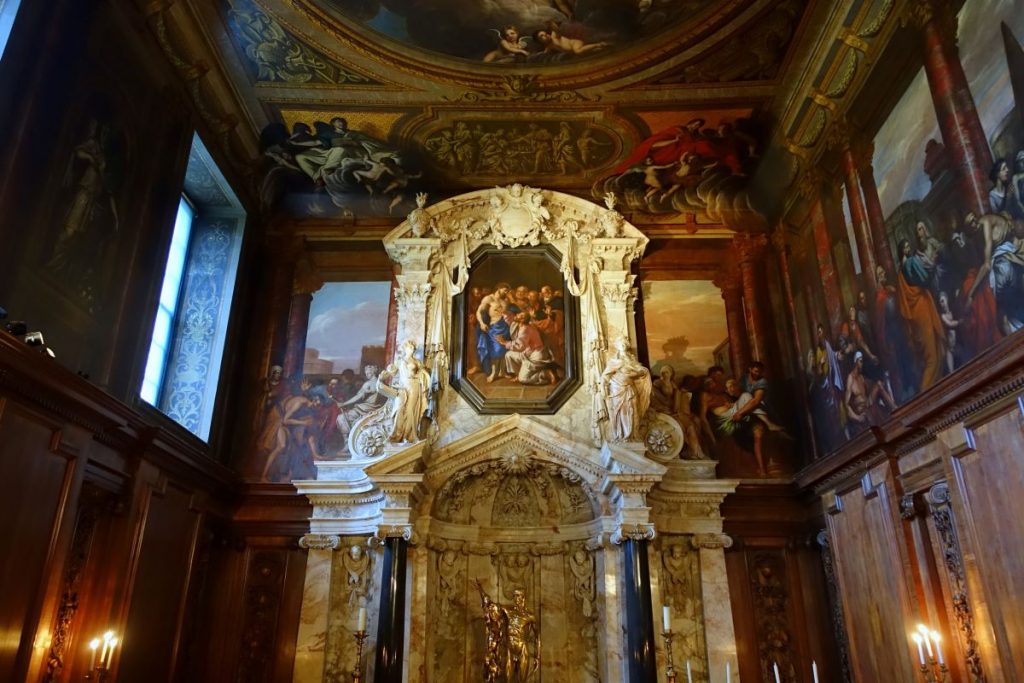
Chatsworth house has been the home to 16 generations of the Cavendish family and has evolved through the years to reflect the different tastes, passions, and interests of each generation.
This house is famous for its stunning art collection that contains work spanning 4,000 years. From ancient roman sculptures and stunning 18th century oil paintings all the way to the modern artists of our time.
A particular point of interest is The Painted Hall. With its gorgeous hand-painted ceilings, this grand room was built between 1689 and 1694. The main idea behind this room was to impress its guests. The window arches and paintings are all the original features of the time.
Additionally, each room holds a rich history with a story to tell. For instance, the panelling in the Oak Room was purposely bought from a German monastery with the idea that it would provoke a conversation.
Throughout this building the intricate carvings, deep colours, detailed handmade furniture, and masses of art truly encompass the grandeur of the Baroque style.
The Homewood
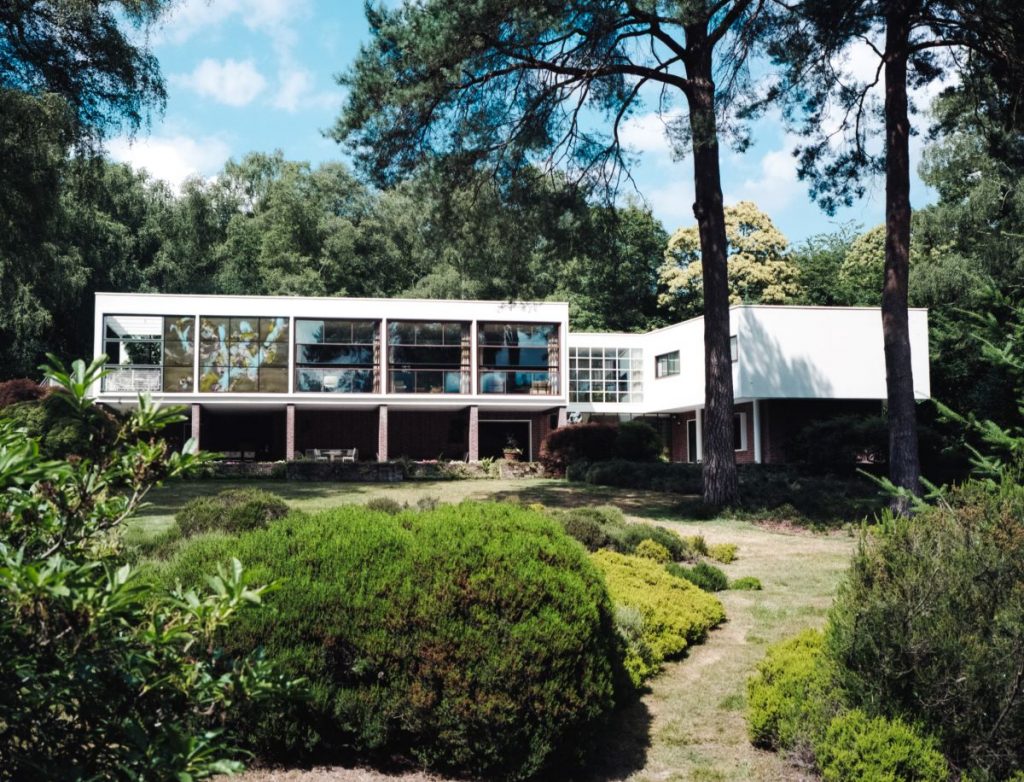
British architect, Patrick Gwynne, designed The Homewood after his family knocked down the original Victorian Villa. Built in 1938, it showcases many of the elements that defined contemporary design at the time, whilst continuing to fuse with the tradition of the English country house.
The living room is one of the most distinctive rooms of the house and blends perfectly into nature with its floor to ceiling windows. This keeps the space light and opens it up to a gorgeous view of the gardens. The furniture design presents an overall mid-century appearance with a detail-free aesthetic. The opposite wall of this room holds inset shelving for books and sliding tambour doors to reveal a drinks cabinet.
Spacious yet comfortable, certain aspects certainly represent that of a mid-century modern house with its neutral colour scheme, free flowing plan, and elements of nature. Since 2004 the Homewood has been open to the public on select dates by the National Trust.
Strawberry Hill
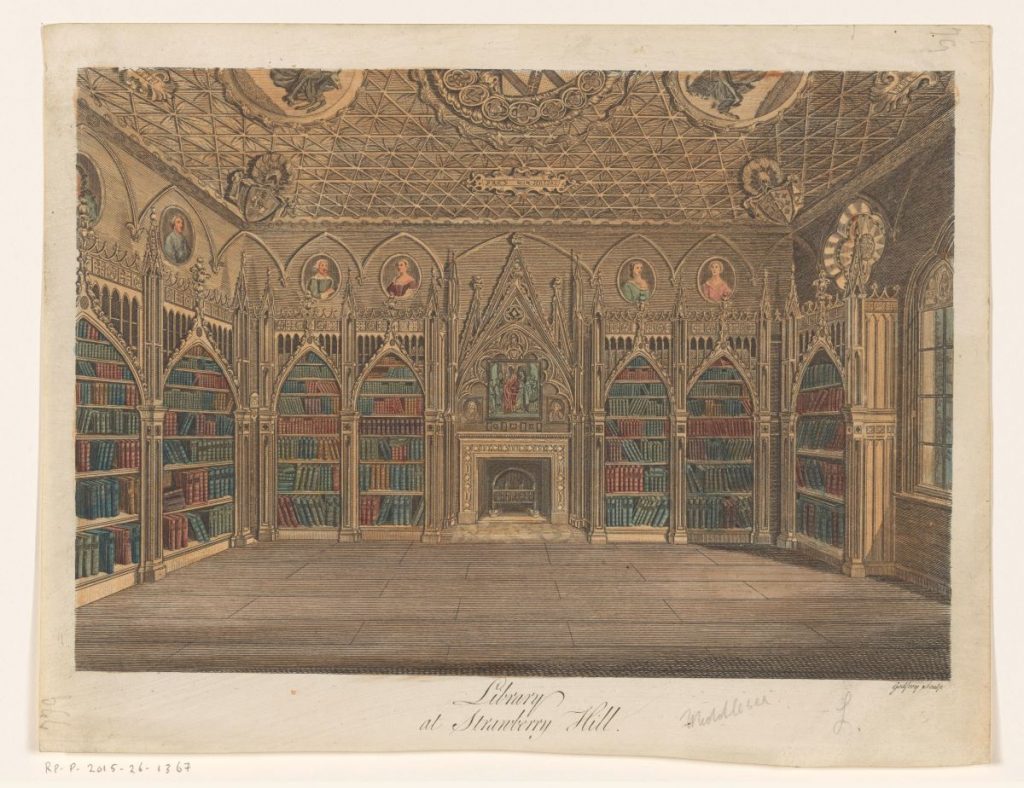
Strawberry Hill was one of the first documented examples to showcase Gothic Revival design. It was a significant factor in the emergence of this style that continued to grow throughout the 17th and 18th centuries.
Design was led by Horace Walpole with the aim to create a theatrical experience full of contrast, drama, and surprise.
The painted exterior of the building presents crenelated walls and tracery within the arched windows. Likewise, Gothic characteristics continue throughout the interior of the house too.
In architecture, Gothic Revival was part of the Romantic movement. Much of this was inspired by looking into the past of medieval design. Undoubtedly, the library showcases this design perfectly. Hence, with its pierced arches, detailed gilding, and painted ceiling, the Gothic atmosphere remains mysterious and impressive.
While the interiors of Strawberry Hill have accurately restored their original appearance, the space lacks an integral part – Walpole’s collection of paintings, sculptures, books, and art. Unfortunately, they sold off the majority of these in a large auction. So now, the rooms have much fewer decorations on the walls than they previously had.
Despite this, Strawberry Hill remains a significant building in the history of design and is an incredible place to visit.
Salcey Cabinet Makers are makers of beautiful bespoke kitchens and furniture. We propose a full bespoke service to any requirement, from hand drawn designs to final installation. No awkward spaces, uneven walls, low ceilings, beams, or any feature is a problem for the expertise of our Cabinet Makers.
For frequent updates and insights into recent projects you can find us on both Instagram and Facebook.
For an obligation free proposal please email zena@salceycabinetmakers.co.uk
Latest posts
- The History of Cabinet Making
- 2024 – Bespoke Kitchen & Furniture Overview
- The Evolution of Modern Furniture Design
- Our Feature in the Listed Heritage Magazine
- Why You Should Have a Bespoke Bathroom
- The Benefits of a Kitchen Island
- Timeless Kitchen Trends
- How The Arts & Crafts Movement Inspired Furniture Design
© 2025 Salcey Cabinet Makers | Created by Rak Design